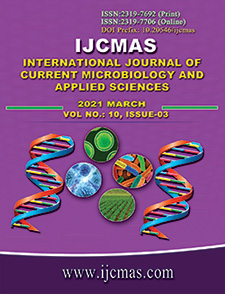


 National Academy of Agricultural Sciences (NAAS)
National Academy of Agricultural Sciences (NAAS)

|
PRINT ISSN : 2319-7692
Online ISSN : 2319-7706 Issues : 12 per year Publisher : Excellent Publishers Email : editorijcmas@gmail.com / submit@ijcmas.com Editor-in-chief: Dr.M.Prakash Index Copernicus ICV 2018: 95.39 NAAS RATING 2020: 5.38 |
Pruning is practiced in ber to enhance productivity of the trees and to improve the quality of fruits. Through the pruning operation, the almost unproductive upper part of the past season's main shoots and its secondary branches as well as undesirable and broken branches are removed so that the most healthy and vigorous growth is induced at the most productive nodes. Due to the high cost and declining availability of skilled labour and the safety issues in the manual pruning, alternative solutions for pruning fruit trees is becoming essential. For the experiment, the developed pruner had pruning capacity 0.0222 cuts/second for ber. The traditional method of pruning had pruning capacity 0.0186 cuts/second for ber. The average time taken to cut dry and wet branches by developed pruner was 24.85 seconds and 25.85 seconds, respectively. The values of physiological response (heart rate, energy expenditure rate and oxygen consumption rate) were low as compare to traditional pruner which indicated that the developed pruner is ergonomically safer to use. The operation cost of developed pruner was economically feasible as compared to traditional method of pruning.
 |
 |
 |
 |
 |